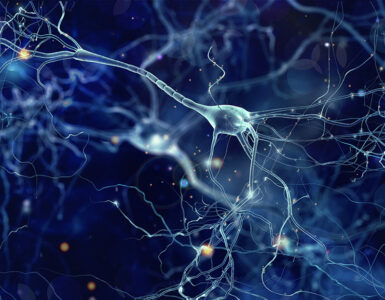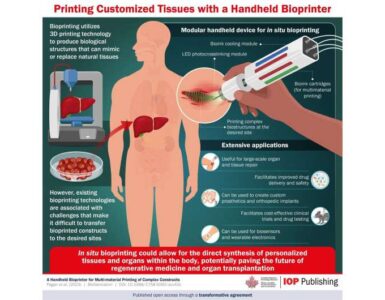by Laurenzo Overee
James requires a new bone marrow in his fight against leukemia. He wakes up every day in agony with eager anticipation for a phone call from the medical facility for a suitable donor. James’ condition is worsening and his time is running out.
One fateful day, James receives the call, but it is far from what he expected. A bone marrow with the perfect match was available – but there was no donor, the marrow was made in a lab.
This could be a stark reality in the immediate future as scientists continue to develop organelles that mimic the functions of the human body.
The Early Beginnings of Manmade Biology
Humans have entertained the concept of manmade life for centuries. The homunculus was the prototype idea of a quasi-humanoid, developed by Enlightenment era thinkers. Homunculi were thought to be much smaller than regular humans and had ephemeral lifespans. The underlying notion is that regardless of the level of sophistication invested in engineered life, these man-made creations often ended up as flawed versions of natural life.
Carbon-based life involves complex functions and processes, and recreating it is nigh impossible with current technology. However, scientists have recently taken a new approach – to deconstruct the organic process bit by bit, part by part, all conducted within a controlled lab environment.
In 1997, scientists created the first human artificial chromosomes (HACs) under a lab setting. The first HACs, known as HT-1080 cells, were a modification of DNA harvested from a young cancer patient. This new type of microchromosomes became a major draw in the scientific community due to its rapid acceptance of transfected genes via various types of vectors, making it highly effective for gene therapy studies.
In 2009, the first artificial ribosomes were created by geneticist George M. Church and his Harvard team. This proved to be a landmark achievement in the field of biology. Ribosomes are the vital components responsible for synthesizing protein structures (and determines the type of protein in the process), based on instructions stored within DNA. Ribosomes are also known to repair damaged cells and shuttle chemical processes throughout the body.
With the success of artificial chromosome production, scientists soon turned their attention to bigger prospects.
The Birth of Artificial Human Organelles
Scientists made yet another breakthrough in 2009. A team from Rensselaer Technological Institute discovered a way to recreate the golgi apparatus found in the human body. This less known organelle is responsible for managing the stability and functionality of proteins in the body.
The synthetic process was achieved through the use of magnetic particles suspended in water droplets and microchips that mimicked the enzymatic processes within the Golgi apparatus. Results from the experiment proved that scientists are able to recreate the biological functions of the targeted organelle – the ability to activate inactive constituents in anticoagulants to render them functional. This is most notable in the synthesizing of heparin, a widely used blood thinner.
With the advent of lab-created Golgi apparatus, scientists have gained a safer and more effective method of studying & developing heparin products – a process that once depended upon harvested animal tissues.
Tackling the Brain Issue
2019 opens a whole new series of questions as scientists face their toughest challenge yet – creating human brain organoids under a lab setting. The procedure was conducted by Dr. Alysson Muotri and his team at University of California San Diego by reprogramming human pluripotent cells (harvested from the blood and skin) into stem cells and specializing them into neurons, which are responsible for thought processes in the brain.
These brain organoids are believed to exhibit some mental traits of preterm human babies, which has raised ethical concerns among many members of the scientific community. Elan Ohayon, the director of the Green Neuroscience Laboratory commented, “if there’s even a possibility of the organoid being sentient, we could be crossing that line.We don’t want people doing research where there is potential for something to suffer.”
Additionally, there have been other scientific concerns that have emerged with the recent integration of synthetic brain organoids in animal subjects. Animals grafted with human cells and tissue are referred to as chimera and have gone on to provide insightful developments in neurological studies.
However, these cross-species experiments have led experts to consider the possibilities of non-human subjects evolving human feelings, emotions and consciousness through grafted brain parts. H. Isaac Chen, one of the researchers involved in the project states, “the field is developing quickly, and as we continue down this path, researchers need to contribute to the creation of ethical guidelines grounded in scientific principles that define how to approach their use before and after transplantation in animals.”
These developments in science provide convenient and revolutionary ways to study the human brain and neurological diseases but they may result in a moral and ethical crisis.
Bane of Boon?
Artificially-created life and its constituents, will allow scientists to study and understand the human anatomy at an unprecedented rate. Animal subjects and academic autopsies may become a thing of the past. Additionally, scientists are more likely to test and prove medical theories through the increased availability in biological resources.
However, humanity needs to pause in its tracks to consider the severe implications of artificial biology. Traditional humanistic studies and the very concept of being unique may be undermined with such newfound technology.
A philosophical statement once posed by a university lecturer goes, “if an old bicycle were to have its components gradually replaced part by part, there comes a point when it becomes a different bike altogether.” In a similar sense, James might cease to be James if his heart, brain and skin were gradually replaced by synthetic parts. Will he still count as the same person albeit with entirely different emotions, personality, and appearance?










Add comment